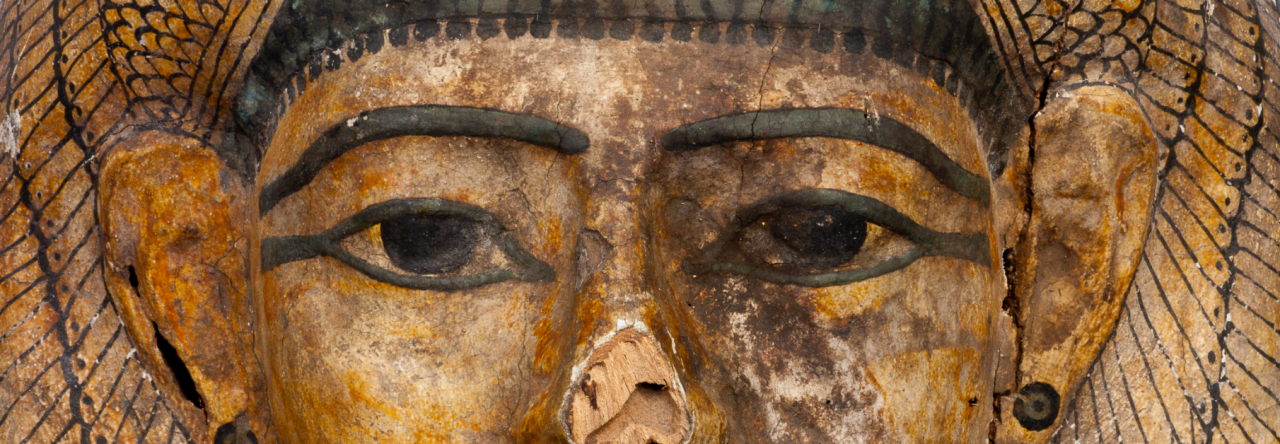Ti Ameny Net lived sometime between the 25th and 26th Dynasties of Egypt (circa 760 to 525 BCE). Hieroglyphs on her coffin give the names of her parents as Nesy-Amun, her father, and Ruru (or Lulu), her mother, who is also called “Mistress of the House,” a title for upper-class women.
Both parents predeceased their daughter, as the epithet after their names, “True of Voice,” indicates. To say that someone was “True of Voice” was similar to saying someone had “passed on.” However, it was a euphemism not just for the dead but also for the dead that had passed the gods’ judgment successfully. Ti Ameny Net is also addressed on her coffin as “True of Voice” and “Mistress of the House,” indicating she succeeded her mother as the primary caretaker of her household. Unfortunately, the coffin does not describe the careers of Ti Ameny Net and her family.
Ti Ameny Net’s mummy demonstrates the most expensive form of embalming, including dehydration in natron, a naturally occurring salt-like substance, the use of a large amount of resin to cover her body, packing and resin inside her body to retain its shape, and finely woven linen wrappings. Scientists estimate she lived until her mid-thirties, about middle-aged for ancient Egyptians, based on fusion of the epiphysis (the ends of bones) as well as teeth, degeneration of the spine and joints, and suture closure in the skull. X-rays of her bones indicate a well-balanced diet; there are no signs of nutritional deficiencies or long-term illnesses that impact bone growth and leave scars.
Approximately 2,700 years ago, Ti Ameny Net lived with her family in Thebes, Egypt. She would have seen the huge temples of Luxor and Karnak in all their glory and viewed the Great Pyramids, which even then were considered ancient monuments. A subject of the omnipotent god-king, the Pharaoh, she might have sailed along the Nile River in reed boats and watched the funeral processions of the royal family descend into the Vallery of the Kings.
Ti Ameny Net’s body was preserved for more than two millennia through mummification and burial. In 1869, Britain’s Prince of Wales, who would later become Edward VII, visited Egypt, and it is reported that thirty mummies, including Ti Ameny Net, were excavated for his royal entertainment. He gave the mummy and her coffin to his American translator, who later sold her to Professor Jabez L. M. Curry of Richmond College. She was exhibited at the 1876 Centennial Exposition in Philadelphia prior to being transported to Richmond. She is now in the collection of the University of Richmond’s Stuart L. Wheeler Gallery of the Ancient World in the Department of Classical Studies.
Although there are no records of what Ti Ameny Net experienced during her lifetime, careful study and scientific analysis of the mummy and her coffin has provided information about her life and death. The study of mummies has advanced from the early twentieth-century practice of autopsies to the mid-century use of x-rays and more recently to CT (computed tomography) scans and DNA extraction. All of these techniques give insight into the life and time of Ti Ameny Net.
Up next: Mummification
